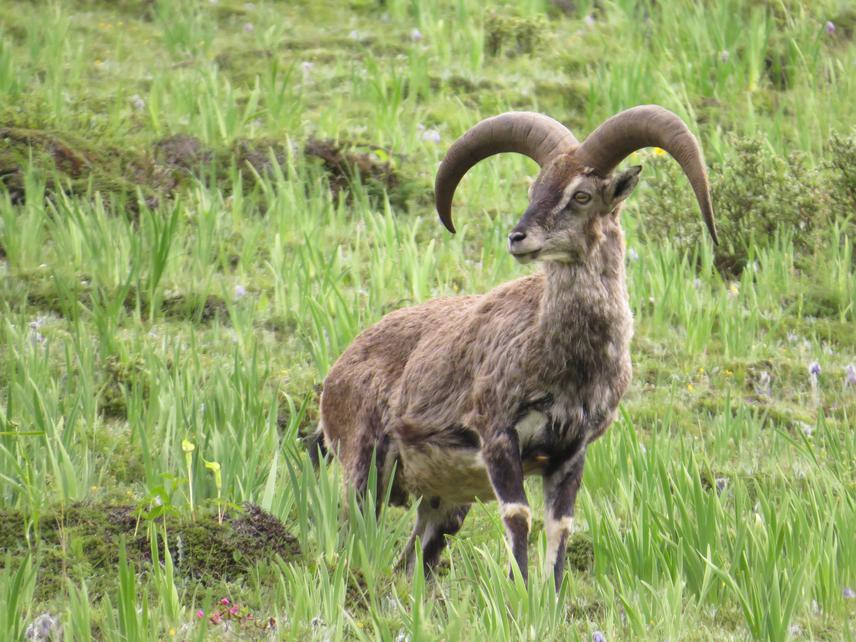Leki
Other projects
16 Jun 2016
Grazing Competition between Blue Sheep and Domestic Livestock in the Bhutanese Trans-Himalaya and Its Impact on the Endangered Snow Leopard
This proposed study intends to estimate the abundance and population structure of blue sheep, and determine the habitat utilization pattern of blue sheep in the study area.

The adult male blue sheep searching his herd.
Bhutan is one of the strongholds of snow leopards (Panthera uncia) in the world. Scientific studies on this globally endangered species have determined depletion of its prey populations as one of the important threats to its conservation in the wild. In Bhutan, blue sheep (Pseudois nayaur) is the principal prey of the snow leopard. Field reports and anecdotal evidences converge to the fact that Jigme Dorji National Park (JDNP) has the largest populations of snow leopards and blue sheep, supported by vast tracts of alpine meadows that provide ideal habitat for wild ungulates.
However, there are very few empirical studies conducted to arrive at a reliable estimate of blue sheep populations in JDNP. In absence of such information, wildlife managers, particularly the park management is constrained to formulate scientific plans for management of key stone species. In fact, the density and abundance of predators are directly dependent on the demographics of their principal prey species; and hence, it is vital to manage the prey populations to maintain a viable population of key predator species.
Therefore, this proposed study intends to estimate the abundance and population structure of blue sheep, and determine the habitat utilization pattern of blue sheep in the study area. The study will commence from early December, coinciding with blue sheep’s rutting season that begins from the onset of winter season during which large herds of males and females congregate, thus offering an excellent opportunity to count blue sheep and determine its herd compositions.
Using 8 x 30 binoculars and spotting scopes, double observer count method will be used to count blue sheep in all possible areas of occurrence in the study area. Each observer will count blue sheep in the same locality for 5 hours at discrete time separated a time interval of 1 hour. Individuals of the herd will be segregated by age and sex. A blue sheep habitat will be classified by vegetation types, slope, aspect, and elevation classes.
The study is expected to achieve several important outcomes:
a) distributional map of blue sheep will be produced;
b) population structure and density of blue sheep will be determined;
c) the habitat use of blue sheep will be assessed;
d) the number of snow leopard that can be sustained will be determined.
Overall, the study will contribute tremendously to the science-based management of snow leopards and alpine rangelands in JDNP.